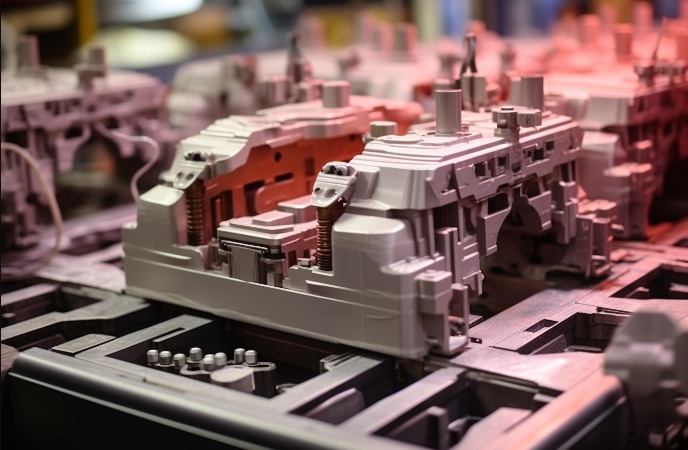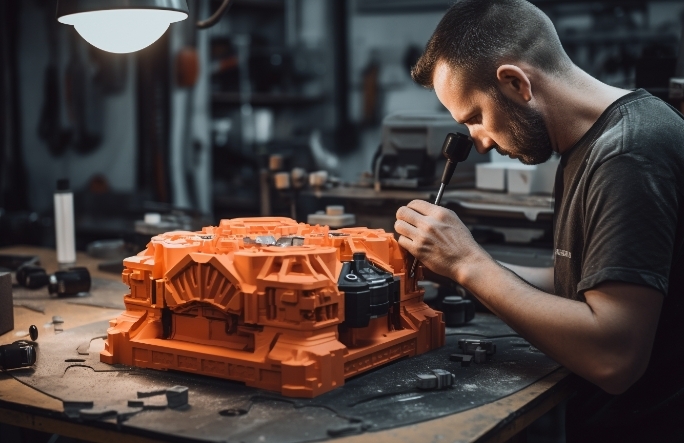Manufacturers are always looking for ways to improve production processes and reduce costs while maintaining high-quality standards. One such critical process that plays a pivotal role in achieving these goals is injection mold making.

Why Do Manufacturers Rely on Injection Mold Making?
Manufacturers across diverse industries have long relied on injection mold making for a variety of compelling reasons. First and foremost, injection molds offer unparalleled precision and consistency. The ability to create complex, customized components with high repeatability makes injection molding an attractive option for producing a wide range of products. Whether it's automotive parts, medical devices, consumer goods, or electronics, injection mold making allows for the efficient production of intricate designs with minimal material waste.
Moreover, injection molding is known for its cost-efficiency. The initial investment in creating molds can be substantial, but the per-unit cost of production decreases significantly for larger quantities. Manufacturers can achieve economies of scale and realize substantial long-term savings, making injection mold making a worthwhile investment.
Injection Mold Making: Is It Worth the Investment?
The question of whether injection mold making is worth the investment is a common one. To answer this, it's important to consider the long-term benefits it brings to the table. Injection molds, when properly designed and maintained, can last for an extended period, producing thousands to millions of parts without significant degradation in quality. This longevity translates to lower production costs over time, making the initial investment well worth it.
Furthermore, injection mold making provides manufacturers with greater design flexibility. With advancements in mold design and technology, complex geometries and intricate features can be achieved with ease. This versatility allows for product innovation and differentiation, which can be a significant competitive advantage in today's market.
How Does Injection Mold Making Impact the Environment?
As sustainability becomes an increasingly important consideration for manufacturers, it's crucial to assess the environmental impact of production processes. Injection mold making has its environmental pros and cons. On the one hand, the precision and efficiency of injection molding reduce material waste, leading to less environmental harm compared to other manufacturing methods. On the other hand, the production of molds often involves energy-intensive processes and the use of plastics, which can have adverse environmental effects.
Manufacturers are increasingly exploring ways to mitigate the environmental impact of injection mold making. This includes using recycled or biodegradable materials, optimizing energy usage, and adopting eco-friendly production practices. ACE, a leading injection mold making supplier, is at the forefront of these efforts, offering sustainable solutions to meet the evolving needs of environmentally conscious manufacturers.
Injection Mold Making: Does Size Matter?
The size of injection molds is a critical consideration that varies depending on the specific manufacturing needs. Smaller molds are suitable for producing small, intricate parts, while larger molds are necessary for larger components. The size of the mold directly impacts the production efficiency and cost-effectiveness of the process.
Manufacturers must carefully assess their product requirements to determine the appropriate mold size. ACE, as a reputable injection mold making supplier, provides expert guidance in choosing the right mold size to optimize production efficiency, minimize waste, and reduce costs.

Industries That Benefit Most from Injection Mold Making
The versatility of injection mold making makes it applicable to a wide range of industries. Some sectors, however, benefit more significantly from its advantages. Automotive manufacturing, for instance, relies heavily on injection mold making for producing precision-engineered parts. The medical industry also benefits from this method to create intricate and sterile medical devices. Additionally, consumer goods, electronics, and the packaging industry all find value in injection mold making to create customized products efficiently and cost-effectively.
While many industries benefit from injection mold making, its importance cannot be overstated in sectors where precision and high volumes are paramount.
How Does Material Selection Affect Injection Mold Making?
Material selection is a critical aspect of injection mold making that directly impacts the quality and performance of the final product. Different materials possess varying properties, such as strength, durability, and thermal resistance, making the choice of material a crucial decision.
For instance, in automotive manufacturing, where safety and longevity are paramount, manufacturers often opt for durable materials like engineering plastics. In contrast, the packaging industry may prioritize materials that are lightweight and cost-effective. ACE, a leading injection mold making supplier, understands the importance of material selection and offers a wide range of options to meet the specific requirements of diverse industries.
It's worth noting that advances in material science continue to expand the possibilities of injection mold making. From biodegradable materials to innovative composites, the choice of materials is evolving to address both performance and environmental considerations.
Is Injection Mold Making the Future of Manufacturing?
The question of whether injection mold making represents the future of manufacturing is an intriguing one. While it's challenging to predict the future with absolute certainty, several factors point towards the continued importance of this method.
Firstly, the ongoing advancements in mold design, materials, and technology are making injection mold making more efficient, cost-effective, and environmentally friendly. Innovations like 3D printing for mold prototypes and smart molding with real-time monitoring are transforming the industry.
Secondly, the growing emphasis on sustainability aligns with the advantages of injection mold making, which generates less material waste compared to alternative methods. ACE is committed to sustainability and offers eco-friendly materials and practices to support manufacturers' green initiatives.
What Innovations Are Transforming Injection Mold Making?
Innovation is at the heart of manufacturing progress, and injection mold making is no exception. Recent technological advancements are transforming the industry in remarkable ways. These innovations include:
1. 3D Printing: 3D printing has revolutionized mold prototyping and design, allowing for rapid iteration and customization. ACE leverages 3D printing technology to create prototypes and test designs before investing in full-scale molds.
2. Smart Molding: IoT-enabled sensors and data analytics are being integrated into injection molding machines to monitor and optimize the production process in real-time. This leads to improved quality control and reduced downtime.
3. Sustainable Materials: Manufacturers are increasingly turning to sustainable and biodegradable materials for injection molding. ACE offers a range of environmentally friendly material options to align with sustainability goals.
Conclusion
In conclusion, injection mold making is a cornerstone of modern manufacturing, offering precision, efficiency, and cost-effectiveness. Manufacturers rely on this process to create a wide range of products, from everyday consumer goods to complex industrial components. While the initial investment may seem substantial, the long-term benefits and environmental considerations make injection mold making a valuable investment. As the industry continues to evolve with innovative technologies, suppliers like ACE are helping manufacturers stay at the forefront of progress, providing solutions that drive both efficiency and sustainability.





